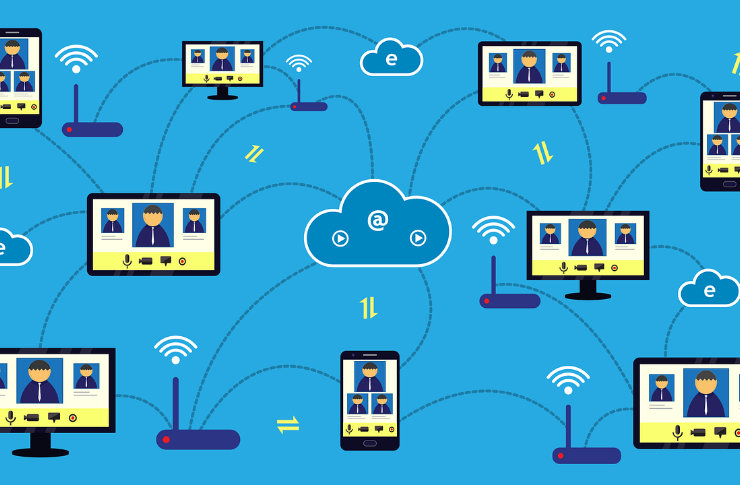Title: The Silent Revolution of Microcommunities
Introduction: In an era of global connectivity, a counterintuitive trend is reshaping our social landscape: the rise of microcommunities. These tight-knit groups, bound by shared interests rather than geography, are redefining belonging in the digital age. From niche hobbyists to hyper-local activists, microcommunities are silently revolutionizing how we connect, support each other, and find purpose. Read below to explore this fascinating societal shift.

As traditional community structures began to erode in many parts of the world – with people moving more frequently for work or personal reasons – the hunger for meaningful connections grew. Microcommunities stepped in to fill this void, offering a sense of belonging that was no longer tied to physical proximity. This shift marked a fundamental change in how people perceive and engage with community.
Beyond the Digital Realm
While microcommunities often start in digital spaces, their impact frequently spills over into the physical world. Take, for example, the phenomenon of local food enthusiasts who connect online but meet regularly to explore new restaurants or organize pop-up dining experiences. These groups not only foster friendships but can also have significant economic impacts on local businesses.
Another intriguing example is the rise of co-living spaces designed around specific interests or lifestyles. From artist collectives to eco-villages, these physical manifestations of microcommunities demonstrate how digital connections can translate into tangible, real-world communities. This blending of online and offline worlds represents a new frontier in community building, one that challenges traditional notions of neighborhood and social circles.
The Psychology of Belonging
At the heart of the microcommunity phenomenon lies a fundamental human need: the desire to belong. Psychologists have long recognized the importance of community in mental health and well-being. Microcommunities offer a unique solution to this need in an increasingly fragmented world.
Research suggests that belonging to a microcommunity can provide numerous psychological benefits. Members often report increased self-esteem, reduced feelings of loneliness, and a stronger sense of identity. The specificity of these communities allows individuals to express aspects of themselves that might be overlooked or undervalued in broader social contexts.
Moreover, the opt-in nature of microcommunities means that members are typically highly engaged and invested in the group’s success. This level of commitment can lead to deeper, more meaningful relationships than those found in more casual social settings.
Challenges and Criticisms
Despite their benefits, microcommunities are not without their critics. Some sociologists warn that the hyper-specificity of these groups can lead to echo chambers, where members are exposed only to ideas and perspectives that align with their own. This concern is particularly relevant in an era of increasing political polarization and misinformation.
Another challenge lies in the potential for microcommunities to exacerbate existing social divides. As people invest more time and energy into niche interests, there’s a risk of becoming disconnected from broader societal issues and diverse perspectives. This fragmentation could have long-term implications for social cohesion and civic engagement.
Additionally, the reliance on digital platforms for many microcommunities raises questions about privacy, data ownership, and the commodification of social connections. As these communities grow and evolve, navigating these ethical considerations will be crucial.
The Future of Social Fabric
As we look to the future, it’s clear that microcommunities will play an increasingly significant role in shaping our social landscape. The COVID-19 pandemic has only accelerated this trend, with many people turning to online communities for support and connection during periods of isolation.
Emerging technologies like virtual and augmented reality promise to further blur the lines between digital and physical communities, offering new ways for microcommunities to interact and collaborate. We may see the rise of hybrid communities that seamlessly integrate online and offline experiences, creating rich, multidimensional social environments.
Furthermore, as awareness of the importance of diverse perspectives grows, we might witness the evolution of microcommunities that actively seek to bridge divides and foster cross-cultural understanding. These bridge-building communities could play a vital role in addressing some of the challenges associated with social fragmentation.
Conclusion
The silent revolution of microcommunities represents a profound shift in how we conceive of and experience community in the 21st century. By offering tailored spaces for connection and belonging, these groups are meeting a deep-seated human need in an increasingly complex world. As we navigate the challenges and opportunities presented by this trend, it’s clear that microcommunities will continue to shape our social fabric in ways both subtle and profound.
Understanding and embracing this shift will be crucial for anyone seeking to build meaningful connections in the digital age. Whether you’re a social scientist, a community leader, or simply someone looking to find your tribe, the world of microcommunities offers a fascinating glimpse into the future of human connection.





